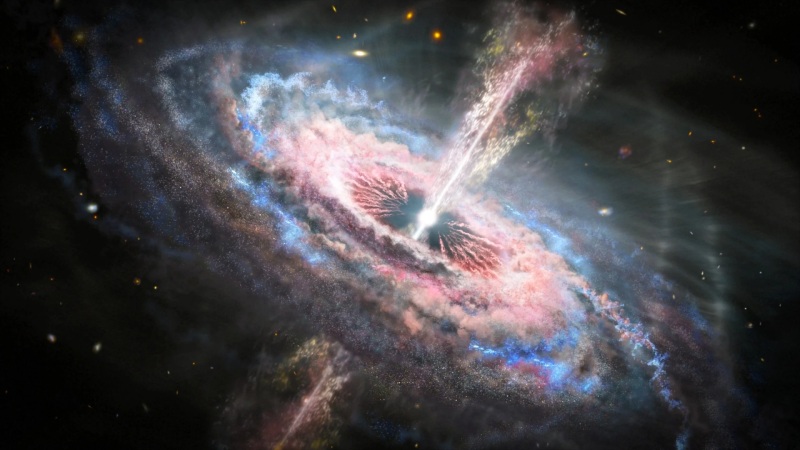A galaxy mysteriously clears the fog of the early universe according to NASA’s Webb telescope

Using the remarkable infrared sensitivity of NASA’s James Webb Space Telescope, scientists are gaining new insights into ancient galaxies, unlocking mysteries about the universe’s earliest days. Recently, an international team of astronomers made an unexpected discovery—a bright hydrogen emission coming from a galaxy that existed much earlier than anticipated. This revelation challenges current theories, as researchers try to understand how this light managed to penetrate the dense fog of neutral hydrogen that filled space during that period.
The Webb telescope detected the distant galaxy JADES-GS-z13-1, which existed approximately 330 million years after the big bang. This finding was made possible through images captured by Webb’s Near-Infrared Camera during the James Webb Space Telescope Advanced Deep Extragalactic Survey. Astronomers estimated its distance by analyzing how its brightness varied across different infrared filters, measuring redshift-the stretching of light caused by the universe’s expansion.
Initial imaging from the Near-Infrared Camera suggested a redshift of 12.9. To verify its extreme distance, an international research team led by Joris Witstok of the University of Cambridge, along with collaborators from the Cosmic Dawn Center and the University of Copenhagen, conducted further observations using Webb’s Near-Infrared Spectrograph. These spectral measurements confirmed a redshift of 13.0, reinforcing that this galaxy existed only 330 million years after the big bang. However, an unexpected element stood out-a distinct, bright wavelength of light known as Lyman-alpha emission, produced by hydrogen atoms. The intensity of this emission far exceeded what astronomers had expected for such an early stage of cosmic evolution.
At this point in the universe’s history, space was filled with a dense haze of neutral hydrogen, explained Roberto Maiolino from the University of Cambridge and University College London. The process of reionization, which gradually cleared this fog, was not completed until about one billion years after the big bang. Yet this galaxy, appearing when the universe was only 330 million years old, displayed a clear Lyman-alpha signature-something thought to be visible only after the hydrogen fog had dissipated. This surprising discovery contradicts existing theories about early galaxy formation, leaving astronomers intrigued.
During the era of reionization, the thick clouds of neutral hydrogen surrounding young galaxies blocked energetic ultraviolet radiation, similar to how colored glass filters light. Until enough stars formed and ionized the surrounding gas, no such light—especially Lyman-alpha emission—was expected to escape. The confirmation of this emission from such an early galaxy carries significant implications for understanding the evolution of the cosmos.
Astronomers did not anticipate finding a galaxy like this under current models of cosmic development, said Kevin Hainline of the University of Arizona. The early universe was expected to be heavily obscured by hydrogen gas, making it difficult for light to break through. Yet this observation suggests that something allowed this galaxy’s light to shine through much earlier than expected, reshaping theories about the timing and mechanisms of reionization.
The precise source of the Lyman-alpha radiation from this galaxy remains uncertain, but researchers speculate it could be linked to the first generation of stars. Witstok suggested that an enormous ionized hydrogen bubble surrounding the galaxy may have been formed by an unusual population of early stars-ones that were significantly more massive, hotter, and brighter than those formed in later cosmic epochs. Another possibility is that the radiation could be coming from one of the universe’s first supermassive black holes, fueling an active galactic nucleus. These findings open new questions about the nature of early galaxies and the forces that shaped the evolution of the cosmos.


